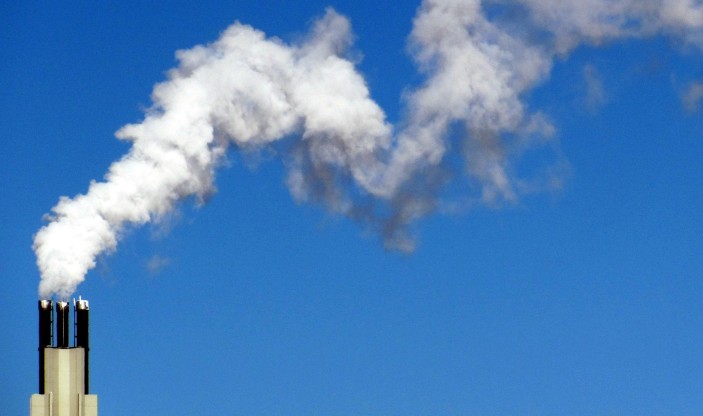It is recognised in the climate science community that literature and research informing the Intergovernmental Panel on Climate Change (IPCC) and relevant policymakers is heavily weighted towards Integrated Assessment Modelling (IAM) work. This prioritises emission-cutting solutions that can be more easily characterised and quantified over those that are challenging to evaluate precisely, such as how society may respond to a major policy shift.
Yet putting options into the ‘too difficult to quantify’ box, is a huge mistake, as my co-authors and I argue in a recent paper published in Climate Policy. Coupled with our desire to precisely quantify, and communicate, numbers, it is important to recognise that there appears to be an optimistic bias that assumes future technologies will solve present-day social and environmental problems.
Perhaps in most wealthy people’s minds, this would be the ideal – no need to disrupt ‘normalised’ lifestyles that include frequent flying, high levels of material consumption, an ability to have what we want, when we want. It is then easy to see why Negative Emissions Technologies (NETs) fit neatly into the climate mitigation discourse. They could lead to net negative emissions in future, avoiding a need to invest political capital in more unpalatable areas such as lifestyle change, and reducing consumption.
But what if NETs fail at scale – what then? Our article argues that they are being so heavily relied upon to inform policymakers, that we are losing sight of alternatives. Furthermore, delaying meaningful debate on the demand-side of the equation is at odds with what the climate science is telling us. There is a finite carbon budget for avoiding 2°C, so the sooner emissions are cut, new habits and behaviours established, and infrastructures to support low-carbon lifestyles put in place, the lower the risk of devastating climate change impacts.
It is not uncommon for humans to be optimistic about what technology can deliver and by when. Carbon capture and storage – even without biomass– is a good example. And with most modelling work being done by those of us in privileged positions in terms of wealth, it is unsurprising that lifestyle change is low down our priority list.
My problem with this optimistic techno-centric approach is that we (wealthy people in high emitting countries calling the shots on climate change) are not only choosing climate change futures on behalf of ourselves, but we are making choices on behalf of others. Whilst we may well be able to adapt to early climate impacts by making marginal adjustments to our everyday living, by installing more air conditioning, moving away from low-lying coastlines, paying insurance companies to repair our homes after floods etc., that isn’t a luxury that most people in the world will have.
Furthermore, with globalised social media, those who will be most impacted by climate change are able to observe us continue as is, while they struggle to adapt, fund and cope with changes in their climates. Global social media lifts the lid on inequalities we are not prepared to address, as this paper highlights.
If big emitting countries, and the big emitters within those countries, are prepared to put in place stringent polices aiming to significantly reduce absolute fossil fuel consumption, even for a few years while establishing low-carbon infrastructure, there would be a much better chance of achieving the 2°C goal. While many industrialising nations will be trying to transition their own energy systems away from fossil fuels, and may well put more industrialised countries to shame in terms of the pace of change, they will still need space for economic growth, and therefore a near-term rise in emissions, to improve standards of well-being.
A meaningful, deep and an equally large body of work focusing on how to build systemic change around energy demand and material consumption is urgently needed. As long as IAMs dominate climate literature, a more balanced perspective of opportunities on the demand side will be overlooked, and time is running out.
Air travel is an example that brings this clearly into view. As academics, we are not prepared to look at the evidence that air travel is one of the most difficult sectors to decarbonise, with constraints on demand needed here more than anywhere (see also my paper All Adrift: Aviation, shipping and climate change policy, also published in Climate Policy). Yet I doubt the number of flights attributable to climate change research activity is declining. The reality of taking a carbon budget perspective, is that one flight taken by me this year, removes a chunk of the budget available for someone in a developing country to heat or cool their home. We are all part of the system – my behaviour here changes the climate impacts others experience elsewhere.
I have a background in climate science, and climate modelling, and I’m certainly not against modelling contributions, but it is essential that we are not blinded by precise quantification to the extent that we overlook the full possibility space. This is particularly important when basing decisions on models that combine the laws of physics with the ‘understandings’ (and certainly not laws) of economics. Not everything can be quantified in a way that is appropriate and useful for policymakers. Other ways of looking at the world are essential and need to contribute to the debate. If we don’t start to make a concerted effort to do that soon, we may well have missed our chance to demonstrate real intelligence in tackling climate change.
About the Author
Alice Larkin is Head of the School of Mechanical, Aerospace and Civil Engineering and a Professor of Climate Science and Energy Policy in the Tyndall Centre for Climate Change Research, University of Manchester.



Project Drawdown has looked at (and continues to examine new data) on ±100 strategies to reduce emmissions, ignoring BECCS and other NET schemes, avoiding debates about 2C (or 1.5C), focusing instead on whether it is feasible with existing strategies (many, like reducing food waste, not technologically dependent) to reduce CO2e enough by 2050 to begin the drawdown of GHG concentrations. Their findings say, yes, it is possible….and it would require a massive transformation of society, not just energy infrastructure but also things like empowering women and girls through education and family planning. We’ve taken their data and looked at the optimal range for implementing these wide ranging strategies using a log-10 scale– ten orders of magnitude between the individual and global scales– and found that the “sweet spot” for implementing these strategies is between 10,000 and 100,000 people– at a village to community level. Obviously, funding, policies, support at higher levels…and grassroots engagement at individual, household and neighborhood level are vital, but the key finding is that where local and global converge is where we can focus on building community resilience and climate action.
How is 4C – 5C (i.e., the actual CoP21) different from the end-Permian mass extinction? (At least considering the Wignall 10,000-year Greenland timeline.) In that case, a flood basalt gave +5C, then light carbon (clathrates) gave a further +5C. This is really terrifying stuff.
Already exists :-
http://www.b-t.energy/landscape/
If i would win a big prize lottery i would install a fund for speeding the development of technology for large scale carbon extraction. To make it work, as soon as possible, as large as possible, as reliable as possible. This is what we need, now. I want to call for anyone anywhere to try and get something going.I think it is best to have an agency that will lead this ahead, to combine all knowledge there is, setting a good pace, and providing funding for R&D
This completely misses the point – there isn’t enough time for R&D to have significant impact: The only way to avoid 4C is immediate demand-side reductions by the 20% of humans who have the dominant carbon footprints.
Also, I’m a retiring chemical physicist and inventor – I have not seen a single shred of evidence that CCS could possibly work. Even simple consideration of the entropy of mixing (i.e., how dilute the CO2e is) makes a technological fix something orders of magnitude larger than anything yet accomplished by humanity, even when fossil fuel energy was cheap and abundant. Betting on it is a fool’s bet.
i don not believe in technology either as a solution. That is why we need research. We already have tech and it cant make a planetary impact for an economic price. I think we need biology. Forestry, algae or seegrass basins. Maybe combined with some tech to make it work the best way. Gentech vegetation might play a role. I just think there are more answers then just the tech-heavy solutions we often see. It must be cheap, large scale and powerful.
And yes, of course we must reduce individual footprints, but it wont save us.